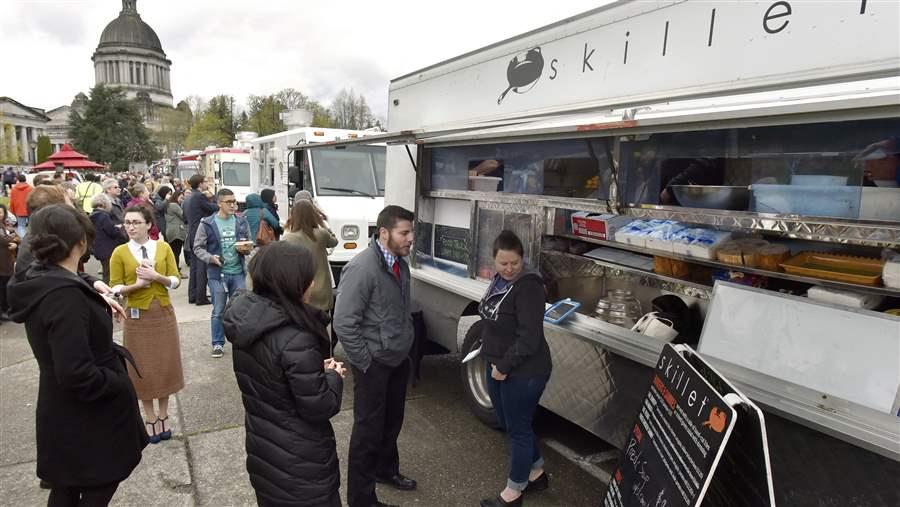By MARSHA MERCER
It’s beginning to look a lot like Christmas, but don’t spend
your shiny new Trump tax cut just yet.
To update an old saying: There’s many a slip ‘twixt the lip
and the cut.
President Donald “Santa” Trump promises “the biggest
individual and business tax cut in American history.” So far he doesn’t have a
plan or even a bill in Congress.
The one-page outline the White House handed out Wednesday read
more like a campaign flyer than a legislative blueprint. It’s hard to argue
with any of these goals:
“Grow the economy and create millions of jobs. Simplify our
burdensome tax code. Provide tax relief to American families – especially
middle income families. Lower the business tax rate from one of the highest in
the world to one of the lowest.”
Briefing reporters, Treasury Secretary Steven Mnuchin and National
Economic Council Director Gary Cohn were short on details but long on -- irony
alert -- hope and change.
“We have a once-in-a-generation opportunity to do something
really big,” Cohn told reporters.
“Under the Trump plan, we will have a massive tax cut for
businesses and massive tax reform and simplification,” Mnuchin said.
The lack of details gives Trump room to negotiate with
reluctant members of Congress. Democrats predictably blasted Trump’s proposal for
mostly helping himself and other wealthy taxpayers,
although he won’t release
his tax returns so we’ll never know how much. He’ll need support of Republicans
in Congress who traditionally have been wary of inflating the federal debt.
One provision left off the outline was a “border adjustment”
tax on imports pushed by House Speaker Paul Ryan, R-Wis., to help pay for tax
cuts. Putting the best face on the situation, Ryan said the White House was
“basically along the same lines that we want to go,” and Congress and the White
House were “moving and getting on the same page.”
Trump’s big idea is to cut the corporate rate more than 50
percent to 15 percent, reduce the number of individual tax rates from seven to
three, raise the personal deduction and eliminate most other deductions -- and
pay for it all through accelerated economic growth of 3 percent.
As Popeye’s friend Wimpy would say: “I’d gladly pay you
Tuesday for a hamburger today.”
We’ve seen this movie before. Presidential candidate Ronald
Reagan endorsed supply side economics and big tax cuts in 1980, promising economic
growth would pay for them. His rival George H.W. Bush mocked Reagan’s plan as “voodoo
economics.”
President Reagan got his tax cuts and the economy did boom
for a while, although economists still argue whether Reagan’s tax policies were
responsible. Eventually Reagan raised taxes several times.
After President George W. Bush cut taxes in 2001 and 2003,
the economy never achieved liftoff, bumping along at an average growth of 2.1 percent
annually for eight years. The 9/11 terrorist attacks were partly to blame for the
sluggish economic growth.
Estimates of the cost of Trump’s tax cuts range from $3
trillion to $5 trillion over five years and up to $7 trillion over a decade. Maya MacGuineas, president of the Committee for a
Responsible Federal Budget made the first estimate, The New York Times the
second.
While tax reform is a worthy
goal, said Robert Bixby, executive director of the Concord Coalition, a
nonpartisan group dedicated to fiscal responsibility, “it is inconceivable that
a tax cut of this magnitude could pay for itself through economic growth.”
The White House predicts “trillions” of dollars in new
revenue through growth. It’s worth remembering that Trump is unencumbered by fear
of more debt.
“I’m the king of debt. I love debt,” he said during the
campaign.
No doubt Republicans and Democrats alike would love to redo
the huge, complicated tax code with its Swiss cheese loopholes, and many people
would love to file their taxes on a “large postcard,” as Mnuchin put it.
But getting there won’t be easy.
Trump’s goal of eliminating deductions except for mortgage interest
and charitable donations faces stiff opposition from Democratic members of
Congress from high-tax states like New York, New Jersey and California.
Plus, it’s too early to know how Trump’s tax plan will
affect most Americans.
“We will be back to you with very firm details,” Cohn told
reporters. He didn’t say when.
©2017 Marsha Mercer. All rights reserved.
30
